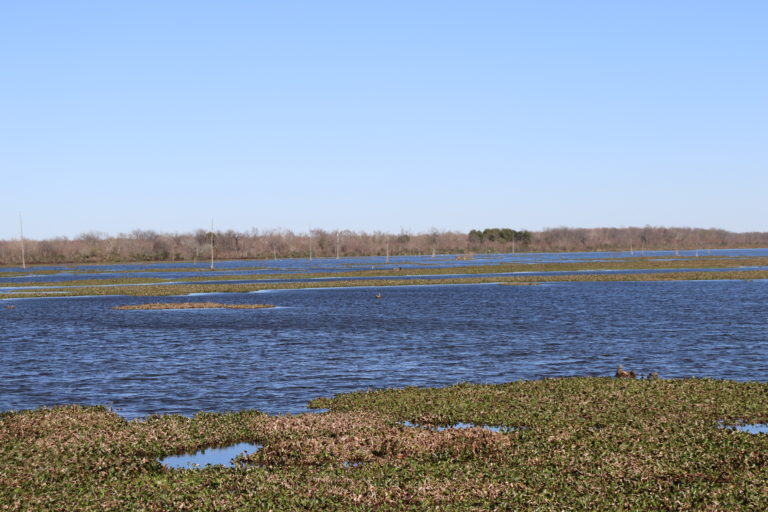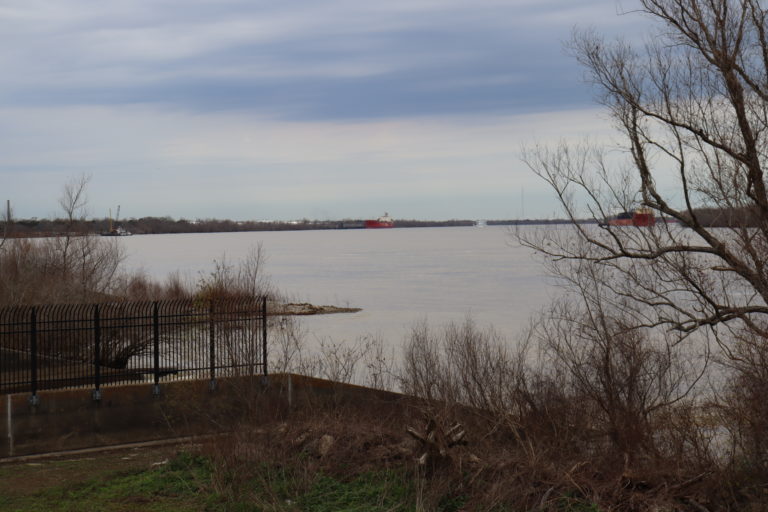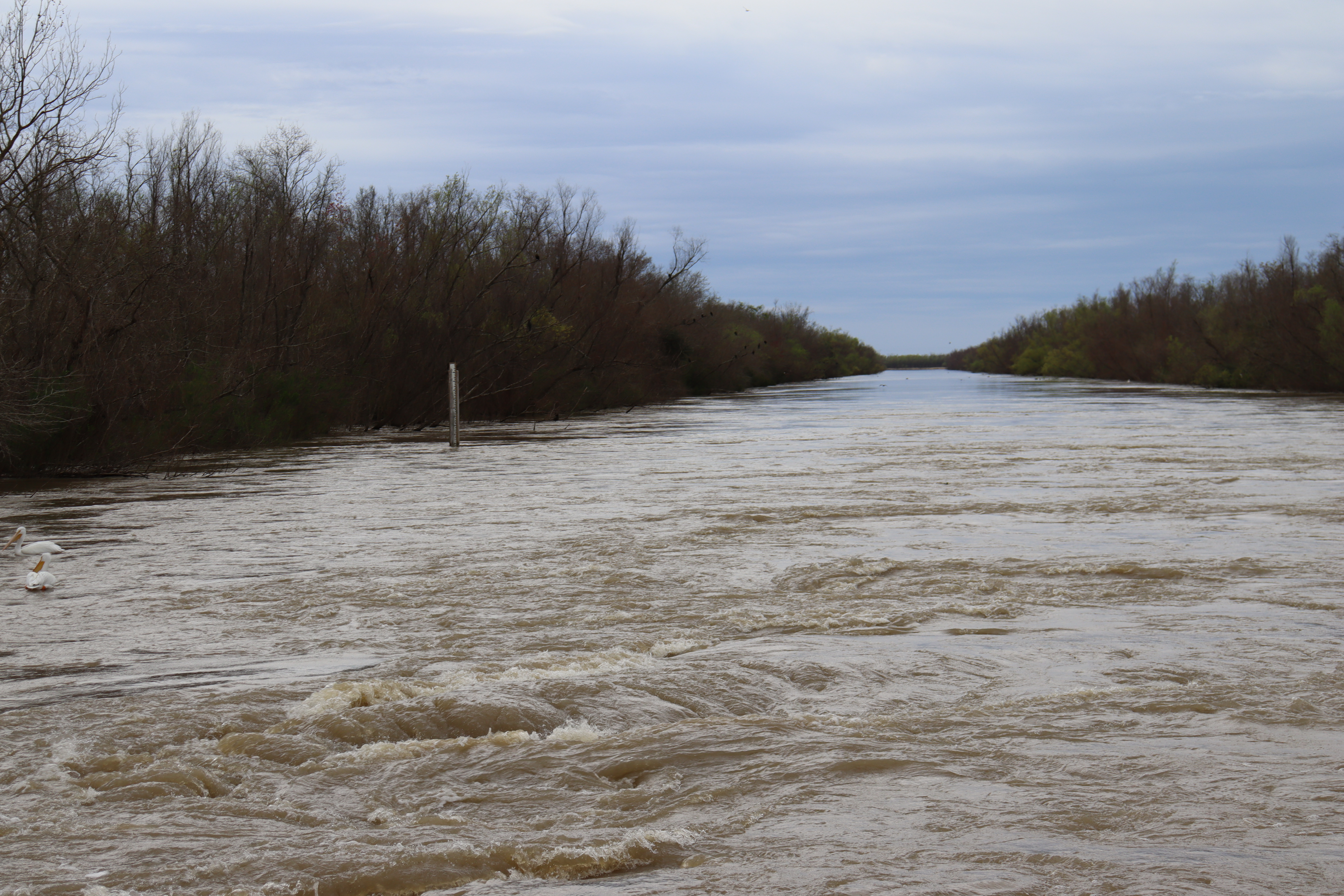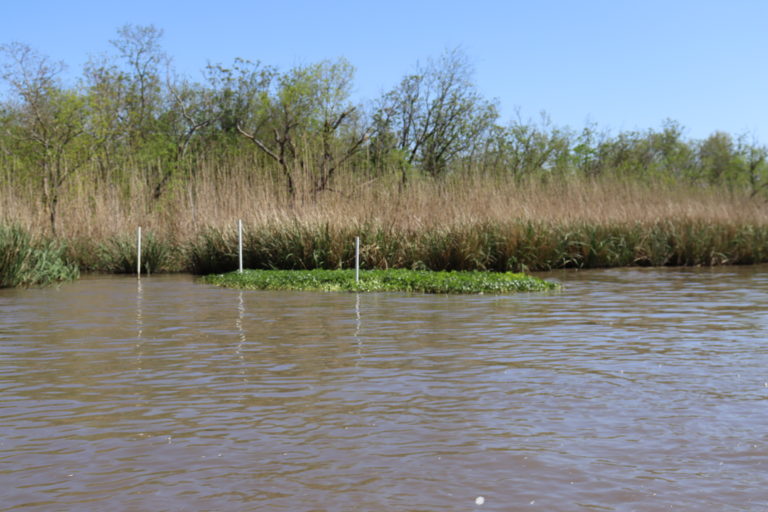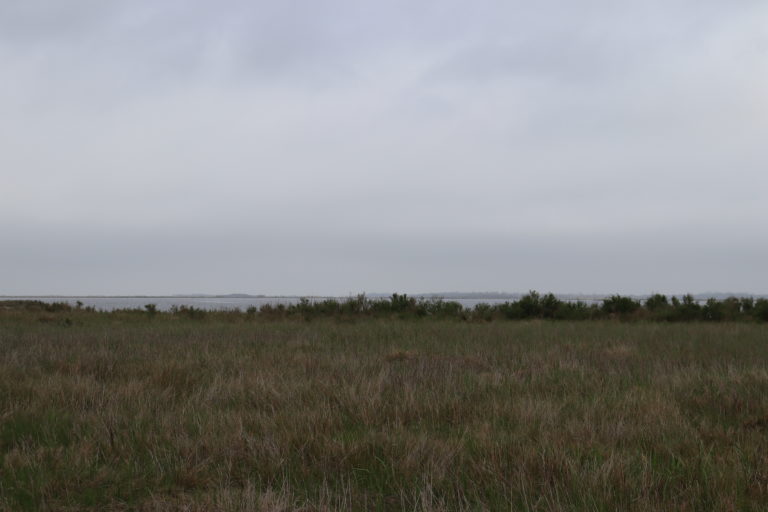Teche-Vermilion
History
Located between Little Vermillion Bay and Freshwater Bayou, is Cole’s Bayou Marsh Restoration. Cole’s Bayou is an installation of a series of culverts made by the process of dredging. The goals of this restoration project are to create 365 acres of brackish marsh water and to nourish 53 acres of existing brackish water, ultimately hoping to prevent saltwater intrusion. So far nearly 400 acres of marsh water have been greatly improved.
Tour
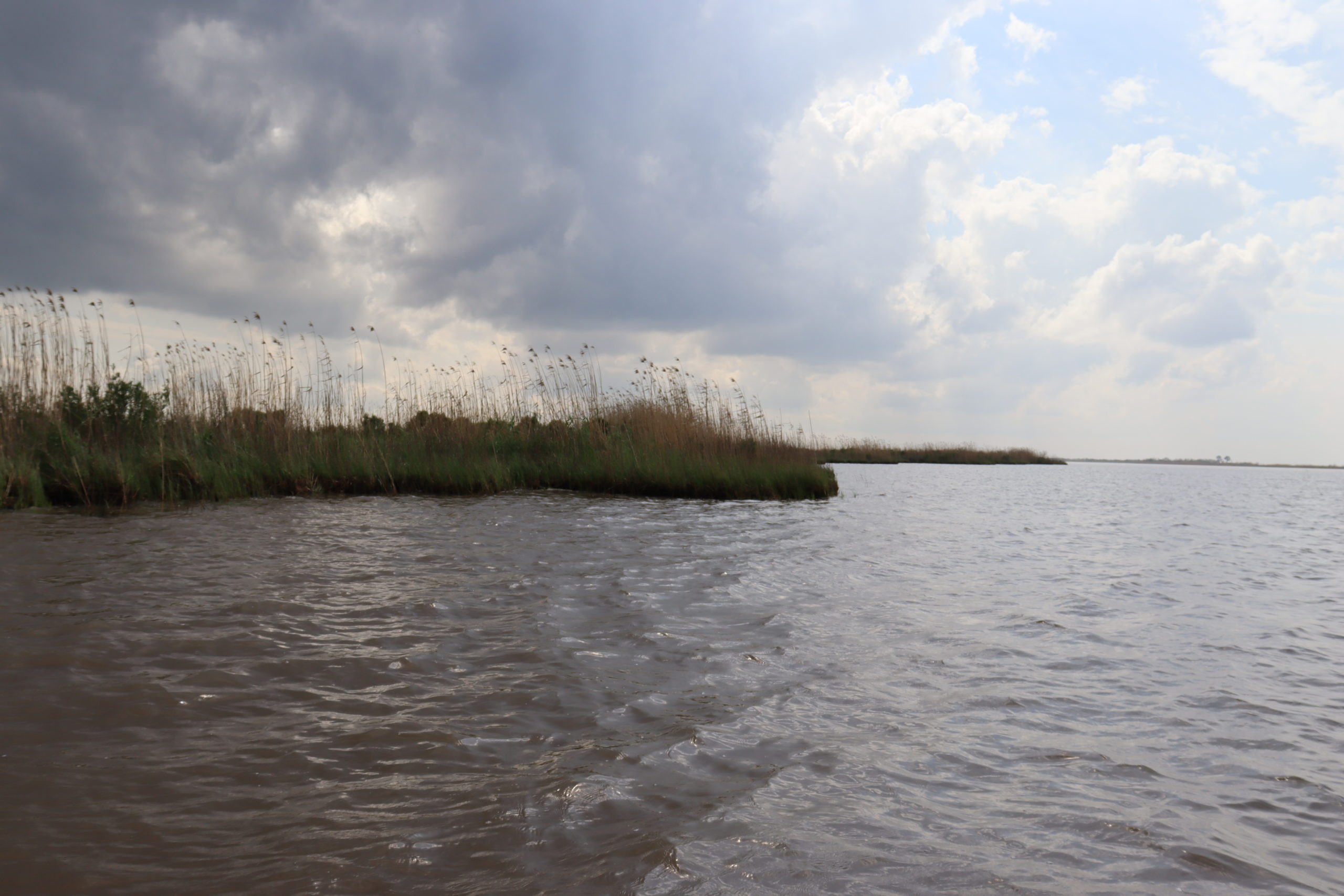
This site was visited on, by us, on March 10, 2023. The site is split amongst three zones of marsh development. At our first location the marsh grass was not behind protective rocks and we made our trip at low tide. This happenstance allowed us to see the root system and rich soil normally submerged by the marsh. It also allowed us to smell the extremely pungent mud of Louisiana's coast. Smell aside, the grass was allowed to grow tall, albeit a touch golden hued which can be attributed to the season shift to spring from winter. Our second location was protected by a small rock levee with chiseled rock serving as a temporary shield for the marsh's growth. Behind the rocks the same lush golden landscape flowed. We also ran into vast amounts of industry right on the water, including mobile platforms for coastal waters and push boats loaded with barges of liquid materials for inland refineries. Unfortunately we did not visit the whole site due to weather issues but the last and final part of the site tour consisted of just about the same technique of work being done along its coast .
Expert
Our expert on and off the water, revealed many personal attachments to the Cole Bayou marsh rehabilitation effort. While not explicitly stated he spent a massive amount of time discussing his work and colleagues on the marsh’s progress and surrounding landmarks of the water. His discussion of post-Hurricane Rita rebuilding was particularly noteworthy, where many corporations left the town, creating a meandering ghost town on the water. Our boat captain had a lot of knowledge regarding the process of restoring wetlands. He was describing how small teams would get native plants from a nursery in Houma, then go out along the shorelines, puncture the ground and place multiple plants in the ground at once. Also, at the second site, the site expert explained the benefits of a rebuilt structure along the shoreline that aided in the protection of the marshlands. The expert also said that there are machines that cleanse the water and unmix the sediment from it to create more land. The site expert has also informed that there are some projects that use this same technique but waste the sediment. With that extra sediment they could protect the plants and trees along the shore and make way for the bigger boats (push boats) to haul goods. The site expert showed us that the restoration of the marshlands is possible. It was explained that this site had been restored so much in such a short period of time. They are also still working on the site, continuing to add more rock barriers to help prevent erosion of this rebuilt land.
Interview Findings
Pre interviews and post interviews were taken with the community members to gather their take on this particular site. One of our interviewed community members discussed an unusual lack of information on the site. Many had never heard of the project before despite considering themselves locals to the area. One community member claimed that the last time they had heard about coastal restoration efforts was during eight grade history classes. This strongly reflects public relations to coastal restoration. Our community member does not recall many meetings with restoration officials about the marsh creation project if any at all. Efforts by the CPRA also possibly went unnoticed due to how much commercial activity is already in the area. A smattering of boats with CPRA signage may look like another corporate fleet moving commerce down the channel or repairing underground pipelines and coastal industrial sites. Another member and also a CPRA employee was passionate about their work in coastal recreation. Although they’d only viewed this particular site once, they were happy about the success of the project and how it has immensely helped the growth of vegetation in the area.
Conclusion
This site is a really great example of a successful coastal restoration project. Hundreds of Acres have been successfully dredged, preventing saltwater intrusion from the coast. Cole’s Bayou has proved once before, with Hurricane Laura, that the area can persevere in extreme weather conditions.
